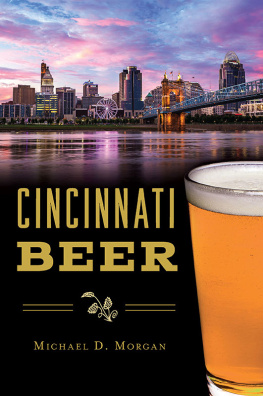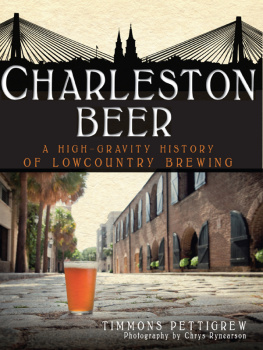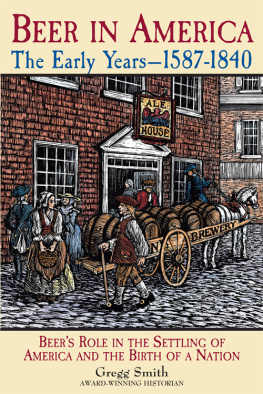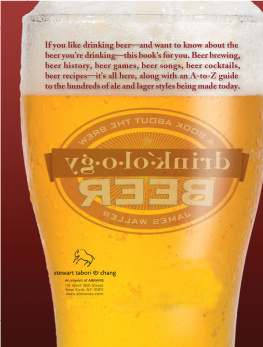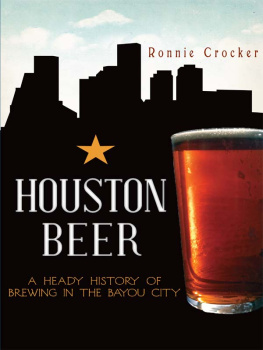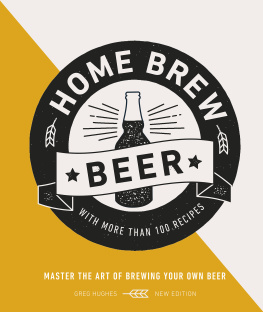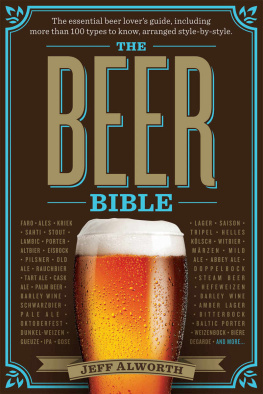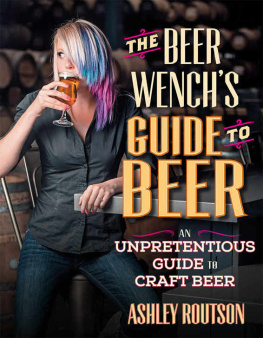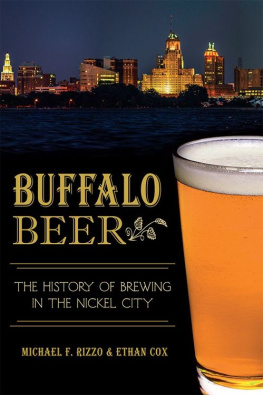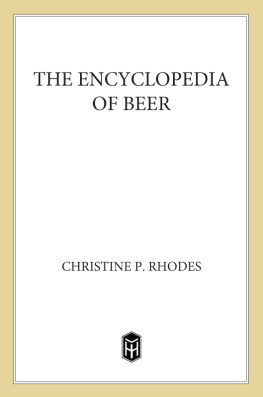
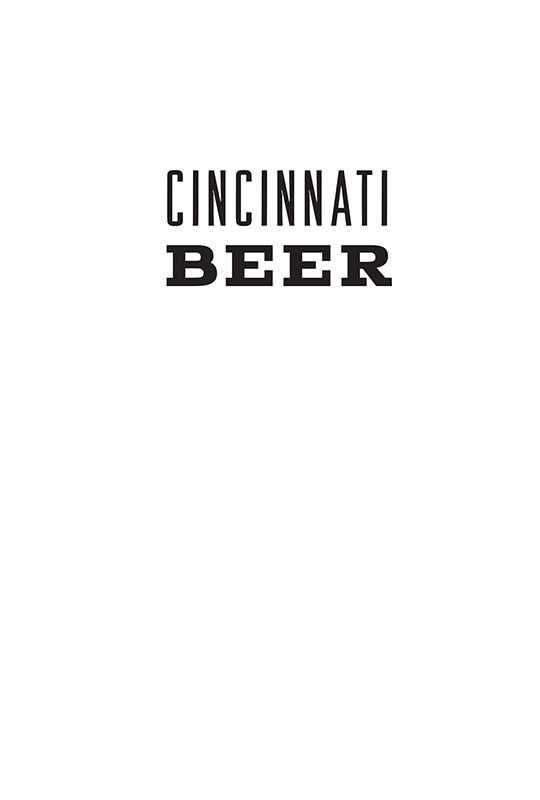

Published by American Palate
A Division of The History Press
Charleston, SC
www.historypress.com
Copyright 2019 by Michael D. Morgan
All rights reserved
Cover photo by Lindsay Meares.
First published 2019
e-book edition 2019
ISBN 978.1.43966.659.3
Library of Congress Control Number: 2018966264
print edition ISBN 978.1.46714.089.8
Notice: The information in this book is true and complete to the best of our knowledge. It is offered without guarantee on the part of the author or The History Press. The author and The History Press disclaim all liability in connection with the use of this book.
All rights reserved. No part of this book may be reproduced or transmitted in any form whatsoever without prior written permission from the publisher except in the case of brief quotations embodied in critical articles and reviews.
This book is dedicated to one man with a questionable beer palate and to another whose taste in beer was unquestionably bad. Nevertheless, there are no two people I would rather walk into Miltons and have a drink with next Friday. To J.K. Smith and Dennis Suggs, as well as Carrie, Katie and everyone else who loved them.
Also to Bailey, the most tenacious and resilient spirit that Ive ever known.
CONTENTS
PREFACE
I have had a front-row seat to the resurrection of Cincinnatis reputation as a beer town, and I have occasionally played a supporting role in the opus. This has created a complicated relationship between local beer history and me. In the words of the Cincinnati Enquirer, I have come to be known as the top expert on Cincinnati beer history. This title has come with a lot of laughs, way too much to drink and a few scars.
My journey to beer historian began in 2005 when I volunteered to be part of a three-man marketing committee for the Brewery District, the friendliest, most disorganized and drunkest community organization I had ever encountered. The Brewery Districts mission was to redevelop the northern half of Over-the-Rhine. Since we barely scraped together enough money to buy beer for the monthly meetings, this was an ambitious goal. The marketing committee was charged with changing the image of this troubled section of townand to do it without any money or support from city government. If John Donaldson, Bryan Vielhauer and I felt intimidated by this seemingly impossible task, we just drank more beer until our attitudes improved. We observed that Cincinnatians repeatedly called for the wholesale demolition of the Brewery District because they only saw a dangerous, ramshackle area full of obsolete old industrial buildings. We couldnt change everything about the areas image at once, but it occurred to me that we could change at least one aspect of it almost immediately. We could use history to alter perceptions. Initially armed only with Robert J. Wimbergs 1989 book, Cincinnati Breweries, I began identifying which old industrial buildings were nineteenth-century breweries. The results of this work surprised me, and it even surprised many of the buildings owners. Cincinnati, as it turned out, contains an unrivaled collection of nineteenth-century brewery buildings in its urban core.
Once we understood that our rotting hulks were a source of pride, an opportunity rather than an albatross, we asked ourselves how we could begin to share this information. Tours could be the answer, but the idea of tourism in northern Over-the-Rhine drew unapologetic criticism, mixed with a lot of laughter. Surely no one would pay money to tour abandoned buildings in a high-crime slum. By 2006, I had become the first executive director of the Brewery District Community Urban Redevelopment Corporation. I gambled everything that we had in the bank to organize the first Prohibition Resistance Tours in 2006. I scratched out a tour route on bar napkins at the Dunlap Caf. Brewery District member John Back and I wrote tour scripts full of research, history, half-truths and some irresponsible speculation. Brewery District members volunteered their time to pull off the very first Cincinnati brewing heritage tours. These tours required a lot of refinement over the years, but the fact that they happened and that they made a little money for the nonprofit Brewery District was a victory.
Also in 2006, after a few too many pints at Arnolds Bar & Grill, bar owner and friend Ronda Breeden talked me into running a parade for the citys annual Bock Beer festival. My first parade resembled my first tourssloppy and unprofessionalbut it was successful because it saved the celebration from extinction. Afterward, I arbitrarily declared myself czar of the Bock Beer festival, gave it a consistent annual date, extended it to three days, lengthened the parade route and declared a permanent event hall. I also created a gender-neutral competition to crown an annual Sausage Queen. In the decade that I led this celebration of Over-the-Rhine and Cincinnatis brewing heritage, it grew from a few hundred attendees in 2006 to roughly thirty thousand by the time I ended my involvement in 2015.
Using my knowledge as both an attorney and a real estate agent, in 2009 I acquired a site for Christian Moerlein Brewing Companys production brewery in Over-the-Rhine, which eventually enabled the company to brew the citys most iconic beer brands in the neighborhood where they began. I also conceived of, obtained the licensing for and opened the Bier Garten at Findlay Market that year, in addition to releasing my first book, Over-the-Rhine: When Beer Was King. Through this unmapped journey, I succeeded in playing a role in what I set out to do in 2005: change the publics perception of Over-the-Rhine and help stop the destruction of the neighborhood. I also unintentionally became a local beer historian along the way.
For the past several years, I have had the privilege of serving as curator of Cincinnatis Brewing Heritage Trail, an ambitious, multimillion-dollar urban walking trail that will help bring the citys brewing history to life. After years of extensive research in that role, I thought that I knew most of what there was to know about the topic of local beer history, until I started writing this book in 2018. With the help of newly accessible, digitized public records and periodicals, I have been able to unearth a lot of new information and correct some widely believed misconceptions.
Beer touches on many aspects of the regions history, from the late 1700s until today. There are a lot of angles for telling Cincinnatis beer storyand far too many breweries to cover all of them. I have chosen to focus this book on the aspects that I think are most fascinating, which includes exploring how closely the brewing industry of the 2010s parallels the brewing industry of the mid-1800s. We are living in a time of unprecedented diversity in the choice of beers that we drink. Almost every neighborhood or suburban town has its own brewery, and large ones have many. This is great as a consumer, but it raises a lot of intriguing questions for those of us who sit on barstools and contemplate the big-picture questions surrounding the future of beer. Craft breweries started popping up in most major cities by the late 1980s, but they have only had a modest impact on the larger beer business. The explosive proliferation of nano-, micro- and regional craft breweries that we are witnessing in the 2000s bucks a consolidation trend in the industry that has been riding an irresistible current in the same direction for more than 150 years. Will the nature of the business change? Will Americans alter their relationship with their beer? Or will Big Beer, like a glowering giant leaning casually against the taproom wall, eventually step forward, swing its massive axe, still crusted with the dried blood of past generations, and viciously begin to slaughter our most beloved neighborhood breweries? Who knows? I dont, but history might hold some answers. At least its worth consulting it. So, wrap your protective hand around a pint that you hold dear and lets start at the beginning.
Next page
